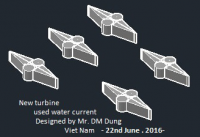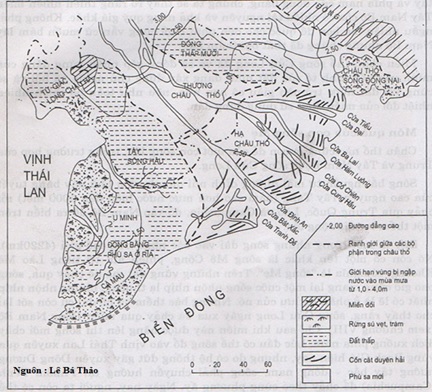Ocean current electricity – a source of green hydrogen for Vietnam. Eng. Doan Manh Dung
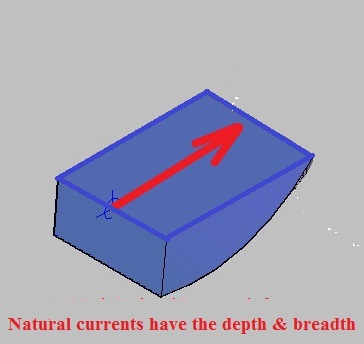
- Practical needs
Global warming due to the greenhouse effect resulting from humans using fuels such as oil and coal. It is a disaster that humans must face.
Vietnam committed to net zero emissions by 2050 at COP26 and decided to join the Fair Energy Transition Partnership (JETP) with a number of G7 countries and other international partners.
To achieve net zero emissions, it is established that all energy sources need to produce “Green Hydrogen”. This means that the power source for electrolysis to extract H2 is a source that does not emit CO2. The term “Green Hydrogen” will be used for thermal power and engines with H20- water emissions.
Currently in the world, solar power and wind power are popular.
Solar power has the disadvantage that the process of manufacturing photoelectric cells and handling them at the end of their exploitation period is difficult. The time orperating occupy much of the earth’s surface, affecting vegetation.
Wind power has the disadvantage of occupy much ground area and where wind power poles are located, residents cannot reside because of noise and effects on birds. Composite propellers are difficult to handle at the end of their service life.
Vietnam has to import all Solar and Wind Power technology and the price is still very high, not meeting the need for electrolysis to get Hydrogen.
2. Ocean current resources in Vietnam
The author believes that the ocean currents in the East Sea of Vietnam are the resonance of two surface and bottom ocean currents. Next we need to understand the cause of the formation of the above two ocean currents.
2.1 Surface ocean currents.
Vietnam is located in the monsoon region. Wind blows on the sea surface and creates surface ocean currents. The Northeast monsoon lasts 8-9 months/year, so surface ocean currents also exist during that time. Surface ocean currents have a North-South direction running along the Central Coast.(The Vietnam state needs to collect statistical documents on the speed of surface ocean currents).
2.2 Bottom ocean currents.
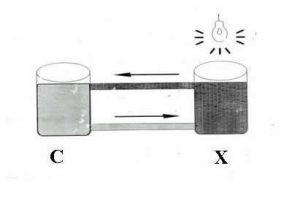
Figure H_01: Experiment to find bottom ocean currents
Use two water bottles C and X with different colored water and large open surfaces.Use a transparent plastic pipe to connect the water at the surface of the 2 bottles and a second pipe to connect the water at the bottom of the 2 bottles. Use a heat lamp to shine on the open surface of the X bottle.We see the flow at the surface from X to C and the flow at the bottom from C to X. Consider C as the North Pole and X as the Equator. Due to the temperature difference, there is bottom flow from the Pole to the Equator. This movement is independent of the earth’s rotation, so the bottom ocean current moves both North-South and East-West according to the principle of Coriolic force that artillery officers know. From this analysis, bottom ocean currents exist for 365 days/year.Thanks to the western coast of the Pacific Ocean in the Northern Hemisphere gradually shifting westward as it moves towards the Equator, the energy source of ocean currents has been brought to the central coast of Vietnam. The above theory explains the formation of white sand beaches starting to appear from Quang Binh and the phenomenon of Ca Mau cape curving towards the West.
The above theory also shows that bays on the East Sea coast will be deep when the bay resists the bottom ocean current entering the bay and there are no large rivers flowing into the bay from the Truong Son mountain range, such as Van Phong bay, Cam Ranh bay, Vung Ro bay.
The bottom ocean current moves both from North to South and from East to West, combined with a main North-South direction running along the Central Coast.
We can find the specific data of surface curent and bottom current and also find the common data when both curents resonate.
(The Vietnam state needs to collect statistical documents on the speed of bottom ocean currents)
2.3 The US and Taiwan commented on the sea current generator in Central Vietnam.
According to reports by American and Taiwanese scientists, the Central Coast of Vietnam is a place with all the elements to develop renewable electricity from ocean currents for 4 reasons:
a/ Near shore
.b/ Shallow waters
c/ High speed.
d/ North – South flow direction is stable.
Using the research method using satellite images, the US and Taiwan announced 12 points on the Western Pacific coast with the highest current speed. In which, the Central Coast of Vietnam occupies the 7 best positions, followed by 3 points in Japan, 1 point in Taiwan and 1 point in the Philippines. The 12-point comparison table is published as follows:
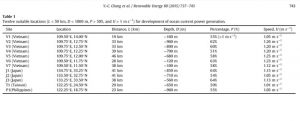
Table 1: With 7 points in Central Vietnam with high flow speed on the West Coast of the Pacific Ocean.
According to the latest seabed topographic maps of Vietnam, KS. Doan Manh Dung discovered two more characteristics of ocean currents in Central Vietnam:
e/ The width of the ocean current is very wide (24 km at Gianh estuary) based on the trace of the remaining current on the map
f/ The length of the ocean current is very long (1000 km from Hon La – Quang Binh to Ke Ga cape – Binh Thuan).
Source from: www.elsevier.com/locate/renene Renewable Energy 80 (2015)
Theoretically:-Northeast winds create surface currents. So the end of the wind will have the strongest current speed.-With bottom currents, they move both from North to South and from East to West, so the western section at the end of the stream is the section with the highest speed and is the section following the slope of the seabed rising to the shore.Because of the above two factors, the speed of ocean currents near shore will be higher than offshore areas.To test this assertion, field measurement documents are needed in the central coastal regions of Vietnam.
3. Technology of the World

Figure 1: There are four limitations to conventional propellers in use
a/ Blade only receives kinetic energy in the operating area of the blade.
b/ The blade has weight causes a lot of energy loss during the conversion process from flow kinetic energy to electrical energy.
c/ Water or wind streams lose 47.7% of their energy when they pass through a traditional blade
d/ Force is partially lost before making the blade turning.
The force touching the balde is divided into 2 parts, the first part that pushes the rotor shaft and the remain part that creates torque to rotate the rotor. The force pushing rotor shaft is the useless part. For this reason, generator using traditional blade need a limited minimum flow rate at which the machine can operate.
4. Vietnamese technology
4.1 Operating principle of the generator according to Vietnamese technology
The generator is a cylindrical drum floating in water and rotating freely around its own axis in a vertical direction.
The drum cover has edges that receive force from the flow. The rotating drum here is standardized with a cylindrical size of 2 m in diameter and 2 m high so that it can be transported by container from the factory to the place operarting.

Figure 2: The rotating drum is attached to the shaft to turn the rotor above of the water.
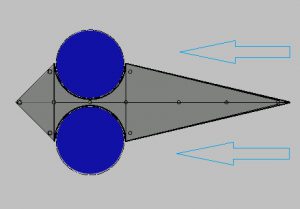
Figure 3: The rotating drum is placed in a frame to receive 1-way flow. Frame for the small generator : L:11.7 m. B : 2,260 m; H : 2.1 m
This frames for small generator can be placed in 40′ containers to be transported from the factory to the place operating. The flow kinetic energy impacts the edge of the drum cover, creating torque and turning the drum.
The drum is connected to the shaft and it turn rotor above the water to generate electricity.
The rotor is rotated by torque, so in theory, the machine can operate at extremely low flow speeds.
A module with two columns of turning drrum can receive maximum kinetic energy in depth.
4.2 Generators are lined in two rows to receive maximum kinetic energy in width.
Generators are lined in two rows , alternated so that the machine can receive maximum kinetic energy in width.
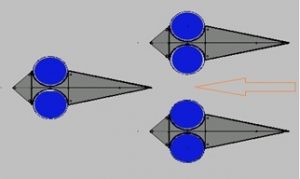
Figure 4: Generators are lined in two rows , alternated
4.3 Machine capacity calculation method
Each drum receives an energy source with cross section H = 2 m, width B = 1 mFlow speed: v= 1m/s
Volume of water impacting the turbine: 2 m3
Mass m = 2 m3 = 2 . 1000 kg. 9.8 N /kg = 2 . 9800 NE = 0.5 mvv = 0.5 . 2 . 9800 N = 9800 N/s,
The energy source transferred to the turbine is P= 9800 J/s = 9800 w
The expected conversion efficiency of the turbine is about 70%.9800 w .70 % equivalent to 7000 w
Capacity of 1 drum 7,000 w = 7 Kw
A pair of drums provides energy: 2 x 7 kw = 14 Kw
For simplicity in calculation, temporarily consider the standard speed to be 1m/s for all positions of the flow.
Capacity is calculated according to the number of drums participating in exploitation.
With a 14 Kw generator, it can provide:3600 x 14,000 w = 50,400,000 w = 50400 Kwh = 50.4Mwh.
Currently in the world, people use 55 KWh to electrolyze 1 kg of liquid hydrogen and about 0.5 kg of liquid oxygen. Price of liquid hydro in the Japanese market: 10 USD/ 1 kg. Price of liquid oxygen in Vietnam: 1 USD/ 1kg.
4.4 Mechanical diagram for 1 direction current
Mechanical diagram for a module with 2 drums and the drum has a diameter of 2 m and a height of 2 m
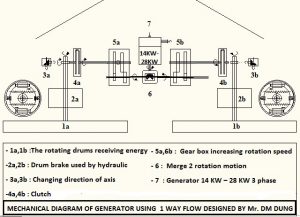
Figure 5: Mechanical diagram of generator for 1-way flow.
The load-bearing structure will change according to the number of rotating drums in operation.
4.5 Connecting reinforced concrete blocks to form the generators plant
Application model for exploiting kinetic energy of one-way ocean currents in Central Vietnam.
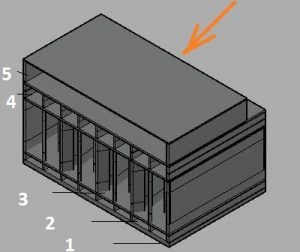
Figure 6: Reinforced concrete block placed on the seabed to receive flow energy.
Reinforced concrete block receiving energy are built in dry dock or on floating docks. After building, let the reinforced concrete block float on the water. The reinforced concrete block is towed to the place operating, be sunk and pinned to the seabed . The rotating drum is dropped into the water during operarting and pulled up for maintenance. At the end of operation period, the concrete block is floated to the surface and towed to the disposal site. During the operation process, marine life can move through the concrete block safely.

Figure 7: 2D diagram of floor receiving enegy and allowing fish to move through.
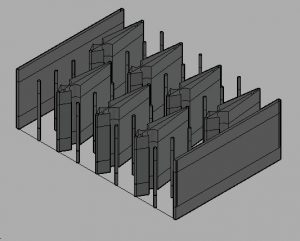
Figure 8: 3D diagram of floor receiving energy
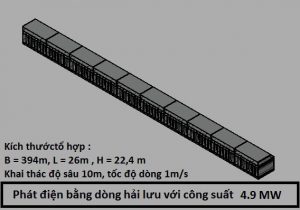
Figure 9: Diagram of a 394 m long generator plant connecting 10 modules.
If the factory is 2000 m long, it has a capacity of 4.9 MW/s x 5 = 24.5 MW/sIf the power plants are 10 km apart, we can have 100 power plants in Central Vietnam with a total capacity of 2450 MW/s.
4.6 Advantages of Vietnam Ocean Current technology
1/ It can eliminate the weight of rotating blade.
2/ Maximize flow kinetic energy in depth and horizontal direction.
3/ The power generation system is located in the air so it is cheap and easy to maintain.
4/ The machine can operate at low flow velocity.
5/ The cost of generating electricity is extremely cheap because the main system is reinforced concrete placed on the seabed and has a long lifespan. When operating, drop the rotary drum to the bottom of the sea. The rotary drum can be maintained and replaced simply.
6/ With a large amount of electricity and low price, Hydrogen electrolysis priority should be given to get hydrogen and oxygen in steel shells to supply to industry.
5. Necessary policies
Currently, the author has completed 2 experimental machines to confirm the success of the rotary drum. Technology models have achieved theoretical optimization at extremely low prices. This is the foundation for green hydrogen production and it does not depend on the power grid. The State needs to prioritize providing hydrological and topographic data to properly assess Vietnam’s ocean current kinetic energy resources. Allow piloting at appropriate locations.
6. Conclusion
Due to the characteristics of the Western Pacific coast in the Northern Hemisphere, gradually shifting to the West when moving towards the Equator, it has created ocean current resources concentrated on the Central Coast of Vietnam. This is a source of cosmic energy formed from the heat difference and from the earth’s rotation from West to East. If the earth turns back, the above ocean currents will disappear.
With Vietnamese technology, the power plant uses reinforced concrete block as the main raw material, so the price is extremely cheap. This is the foundation for green hydrogen production.Vietnam’s ocean current power technology can be exploited in the tail currents of hydropower plants using the potential energy of reservoirs around the world, tidal currents, rivers, ocean currents… to both generate electricity and helps prevent coastal erosion.Vietnam’s ocean current power technology has a low cost and a huge amount of renewable electricity, so the development of ocean current power needs to be associated with an electrolysis solution to get liquid hydrogen to supply to the thermal power industry or internal combustion engines. ./.
